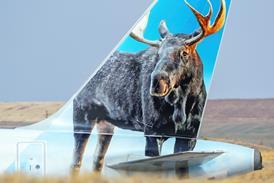Northrop Grumman has quietly developed and tested a new kind of wide-area surveillance sensor for aircraft in Iraq.
The multi-band synthetic aperture radar (MB SAR) fits in the same category of surveillance systems as the US Air Force's highly publicised Gorgon Stare pod. The key difference is that Northrop's sensor covers a broad area by using radar, while Gorgon Stare employs camera technology.
That means the MB SAR, unlike Gorgon Stare's electro-optical sensor, can see through clouds, says Matt Bechta, a deputy manager for Northrop. Although a radar is unable to positively identify people as targets, it can hand-off such "tracks" to an imaging sensor if necessary.
Last year, the US Naval Research Laboratory (NRL) deployed the MB SAR to Iraq aboard the Lockheed NP-3D testbed to evaluate the new sensor's ability to detect improvised explosive devices (IEDs). The team completed 34 flights, each covering up to 200km of road by flying 20 circles, each with a 20km diameter, according to the NRL.
The imagery was scrutinised to detect changes in the earth, which can signify the presence of an IED. With sensor operators on board the aircraft, changes could be detected within minutes of the initial radar scan, the NRL says.
The MB SAR scans for targets in the UHF and L-band parts of the spectrum, which allows the sensor to search across a wide geographic area. Most synthetic aperture radars are designed to search in the X-band.
The NRL has identified the MB SAR as a sensor developed for the Defense Intelligence Agency and the US Air Force, but Northrop has other plans for the new payload.
The company wants to transition MB SAR into a long-term surveillance payload for the US Army's fleet of Hawker Beechcraft King Air 350ERs, Bechta says.
It it proceeds, the MB SAR will follow a series of intelligence payloads rapidly developed and deployed by Northrop in recent years. Previous examples have included the Hunter Green Dart communication-intelligence system and the vehicle and dismount exploitation radar.
"The services have deployed systems to the [Afghanistan] fight that in many cases are quick reaction capabilities [QRCs]," says Trip Carter, director of Northrop's airborne intelligence, surveillance and reconnaissance mission area.
"We're looking to partner with the army and other services to transition those QRCs to sustainable, evolvable, progammes of record for the long-term."
Source: Flight International























